
by editor | Aug 25, 2024 | Care Keys - Aides, Care Keys - Chaplains, Care Keys - Nurses, Care Keys - Social Workers, Rules and Regulations - Office Team, Rules and Regulations - Social Workers, Rules and Regulations - Volunteers
As a member of the hospice healthcare team, you play an important role in caring for your patients. Because of this, you will often learn private information about them – not just about their health, but also about their personal relationships, their financial situations, and other sensitive and personal information. It is important to understand that you have a legal and ethical responsibility to keep this information confidential and only share it – when necessary – with other healthcare professionals who are part of the patient’s care team. It is your responsibility to protect patient privacy.
Why is it important to keep healthcare information private?
In 1996, the Health Insurance Portability and Accountability Act (HIPAA) was passed to protect people’s health information. The main goal of HIPAA is to ensure that health information is kept private and secure, and only shared with those who need to know in order to provide care or process medical records. This law applies to everyone working in healthcare.
What does HIPAA protect?
HIPAA protects what is called “personal health information” (PHI). This includes any details that could identify a patient, such as:
- Name
- Medical record number
- Date of birth
- Address
- Email address
- Social security number
Only those directly involved in a patient’s care or those who handle billing or administrative tasks should have access to this information.
Your role as a member of the patient’s healthcare team
As a member of the patient’s healthcare team, it is important to follow HIPAA rules to protect your patient’s privacy. If you share a patient’s health information without permission, it can harm the patient and break the trust they have in you. Here are some important things to keep in mind:
- Do not share information unnecessarily: Never discuss a patient’s health with friends, family, or on social media. Only discuss patient care with other healthcare workers who are directly involved in that patient’s care.
- Keep conversations private: If you need to talk about a patient’s care with another healthcare worker, make sure you do so in a private place where others cannot overhear.
- Secure patient records: Whether you are handling paper records or using electronic systems, always ensure that patient information is stored securely.
Why following HIPAA is important
By following HIPAA regulations, you help protect your patient’s privacy, ensure their information is handled with respect, and build trust. Patients and their families rely on you to keep their personal information safe, and HIPAA provides the guidelines you need to do so.
What are the guidelines of not following HIPAA?
Hospices and their employees must protect patient information at all times. If HIPAA rules are not followed, it can lead to serious consequences including fines, penalties, and even imprisonment. This applies not just to the hospice itself but also to any vendors or contractors who work with patient information.
Final thoughts
Understanding and following HIPAA is an essential part of your job as a member of a patient’s healthcare team. By keeping patient information private, you help ensure their safety, comfort, and trust in the care they receive. Remember, protecting privacy is not just a legal requirement – it is a crucial part of providing compassionate and respectful care.
Where can you find more information
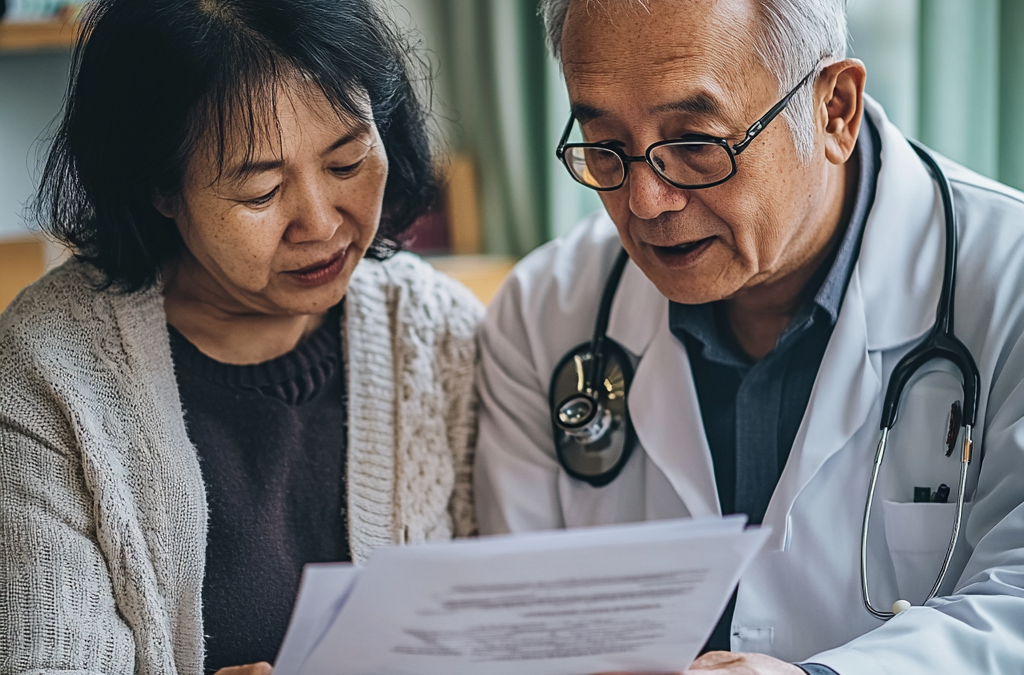
by editor | Aug 24, 2024 | Care Keys - Aides, Care Keys - Chaplains, Care Keys - Nurses, Care Keys - Social Workers
What are advanced directives?
Advanced directives give patients the ability to direct their medical care in advance. Advanced directives are legal documents that tell doctors and caregivers what a patient wants for their healthcare if the patient becomes too sick to speak or make decisions. Advanced directives explain what kind of medical care the patient would like to receive, or not receive, in different situations.
Advance directives can also name the person who should make medical decisions for the patient in the case that the patient is unable to make those decisions.
Who writes an advanced directive?
The patient, while they are still able to make decisions, will write the advanced directive. Sometimes a family member or a close friend will help the patient, but it is important that the patient’s wishes are clearly written down.
When are advanced directives used?
Advanced directives are used if the patient is too sick or injured to talk or to make decisions about their own care. For example, if a patient is unconscious or has a severe illness that makes it difficult for them to speak, doctors or caregivers will check the advanced directive to understand the patient’s preferences and to know what to do.
How should advanced directives be treated?
An advanced directive is a legal document and must be followed carefully. The following is some guidance for members of the patient’s care team, relating to the patient’s advanced directive:
- Know where it is: It is important for members of the patient care team to know if the patient has an advanced directive and to know where it is kept. This will help ensure that the patient’s wishes are followed, if the need arises.
- Respect the patient’s wishes: The advanced directive represents the patient’s voice when the patient cannot speak for himself or herself. It is important to follow what it says in the advanced directive.
- Communicate: If a member of the care team is not sure that they understand what is written in the advanced directive, they should speak with other members of the care team. Together, they can work to understand the advanced directives and ensure that the patient’s wishes are honored.
- Stay calm and supportive: This situation is often stressful. It is important that members of the care team remain calm and provide support to the patient and members of the family.
Where can you find out more
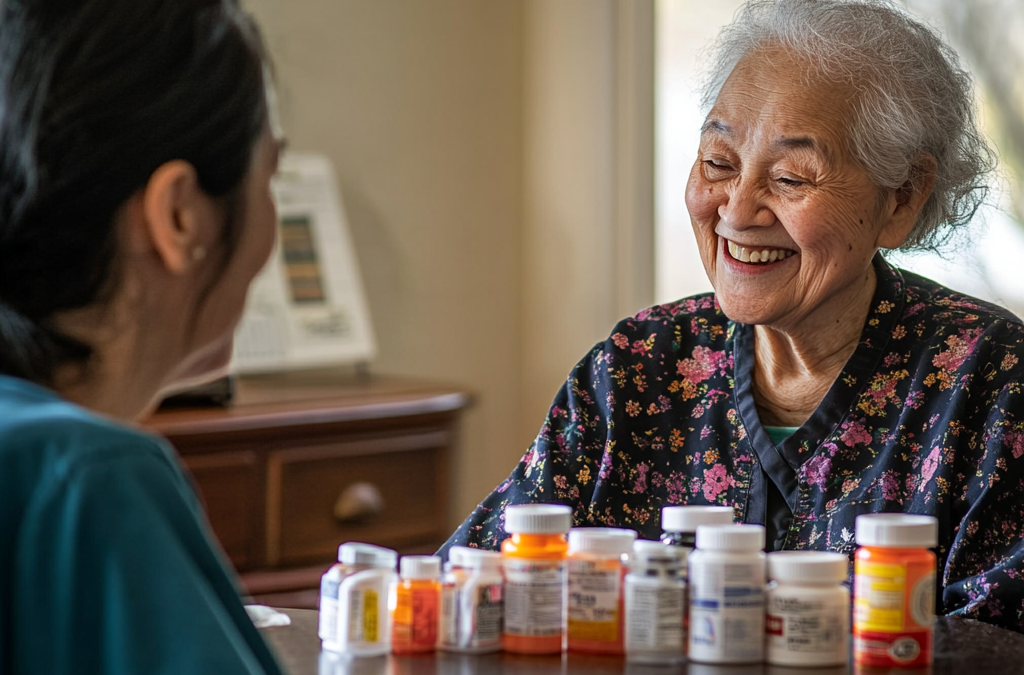
by editor | Aug 23, 2024 | Care Keys - Aides, Care Keys - Nurses, Clinical Compliance
As a hospice home health aide (HHA), you have an important job in taking care of patients. Part of your job is helping with medications, but it’s really important to know what you can and can’t do. The rules might change depending on the state you work in, because each state has its own guidelines. Knowing these rules helps you give the best care to your patients while staying safe and following the law.
Why Medications Are Important
Medications help patients feel better when taken the right way. Here are some things hospice aides should do:
- Remind Patients: Make sure patients take their medicine on time.
- Watch for Changes: Pay attention to how patients feel after taking their medicine.
- Report to a Nurse: If a patient feels sick or different after taking medicine, tell a nurse right away.
Doing these things helps keep the patient safe and healthy. Let’s look at these ideas more closely.
What You Need to Know About Medications
- Medication Adherence: It’s really important that patients take their medicine exactly as the doctor says. If they miss doses or take it wrong, their symptoms might get worse. You can help by reminding patients to take their medicine and making sure they take the right amount at the right time. But remember, what you can do to help might be limited by state rules.
- Recognizing Side Effects: You should know about the common side effects of the medicines your patients take. You don’t need to know everything, but be aware of signs like dizziness, sleepiness, or changes in behavior. If you notice something unusual, tell the nurse right away. State guidelines often say it’s your job to watch for and report these things.
- Understanding Medication Schedules: Some medicines need to be taken at certain times, with food, or on an empty stomach. You should know these basic rules so you can help patients stick to their schedule. But remember, you can’t change the schedule or the medicine—only a doctor or nurse can do that.
- Communication with the Healthcare Team: It’s really important to tell the healthcare team about any problems with taking medications, side effects, or new over-the-counter (OTC) medicines the patient might be using. State rules usually say you must keep clear and accurate notes about your observations.
What Can a Hospice Aide Do with Medications?
- Remind Patients: In most states, you can remind patients to take their medicine. This is really important, especially for patients who might forget or have a strict schedule. But remember, reminding isn’t the same as giving the medicine. Usually, you can’t put the medicine in the patient’s mouth or give them a shot unless you have special training and the state allows it.
- Help with Medication Setup: In some states, you might help patients by setting up a pillbox or organizing their medicine, but only under a nurse’s supervision. This helps make sure the patient takes the right dose at the right time. Remember, the patient or a licensed professional must give the medicine.
- Observe and Report: You spend a lot of time with the patient, so you might be the first to notice changes in how they feel. You should know which medicines the patient is taking so you can spot any side effects, missed doses, or other problems. Always report these to the nurse and write down what you observed, if your state allows it. Just remember, only write down what you see—don’t make any medical guesses.
What Can’t a Hospice Aide Do with Medications?
- You can’t give the medicine directly to the patient, like putting a pill in their mouth
- You can’t give shots or injections.
Your job is to help and remind patients about their medicine, not to give it directly.
Safety First!
- Follow the Rules: Every state has different rules about what you can do with medications. Some states let you help a little more, like setting up pillboxes, while others have stricter rules. Following these rules keeps everyone safe.
- Ask if You’re Not Sure: If you’re not sure about something with medications, always ask a nurse or follow your agency’s guidelines.
Where Can You Find Out More
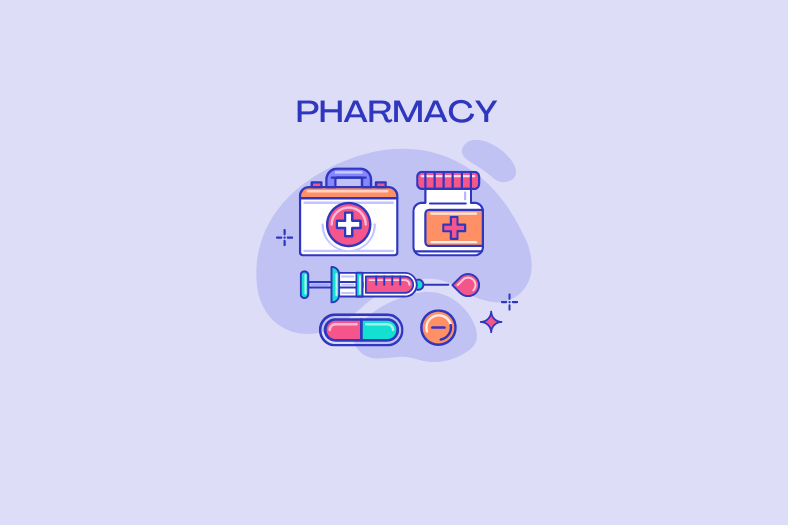
by editor | Aug 19, 2024 | Care Keys - Aides, Care Keys - Nurses, Care Keys - Social Workers
When taking care of patients in hospice, it’s important to understand the difference between over-the-counter (OTC) and prescription medications. Knowing how these medications work and what they’re used for can help you provide better care.
What Are Over-the-Counter Medications?
Over-the-counter (OTC) medications are medicines you can buy without a doctor’s prescription. These include things like pain relievers (like Tylenol or Advil), cold medicines, and allergy pills. People use OTC medications for common health problems like headaches, colds, or minor aches and pains. These medicines are generally safe when used as directed on the label. But it’s still important to be careful, especially when patients are taking other medications.
What Are Prescription Medications?
Prescription medications are medicines that a doctor or other healthcare provider must prescribe. These drugs are often stronger than OTC medicines and are used to treat more serious health conditions. Because they are stronger, they can have more side effects or cause harm if not taken exactly as prescribed. Patients in hospice care often take prescription medications to manage pain, control symptoms, or treat chronic conditions.
Key Differences Between OTC and Prescription Medications
- Access: You can buy OTC medications at a store without a prescription, but you need a doctor’s order to get prescription medications.
- Strength: Prescription medications are usually stronger and meant for more serious conditions.
- Safety: Both types of medications are safe when used correctly, but prescription medications require more careful monitoring because of their strength and potential side effects.
What Hospice Aides Need to Know About Medications
- Never Give Medications Without Approval: Always follow the care plan and never give a patient any medication, including OTC, without approval from a nurse or doctor.
- Be Aware of Interactions: Some OTC medications can interact with prescription drugs and cause problems. For example, taking aspirin (an OTC pain reliever) with certain prescription blood thinners can increase the risk of bleeding.
- Watch for Side Effects: Both OTC and prescription medications can have side effects. Be alert for any changes in the patient’s condition, and report anything unusual to the nurse or healthcare provider.
- Follow State Guidelines: Each state has specific rules about what hospice aides can and cannot do when it comes to assisting with medications. In some states, aides may help with medication reminders, but they should not give medications directly. Always follow the guidelines in your state and the care plan for each patient.
Where Can You Find Out More
- FDA: Understanding Over the Counter Medication
- Mayo Clinic: Prescription Drug Information
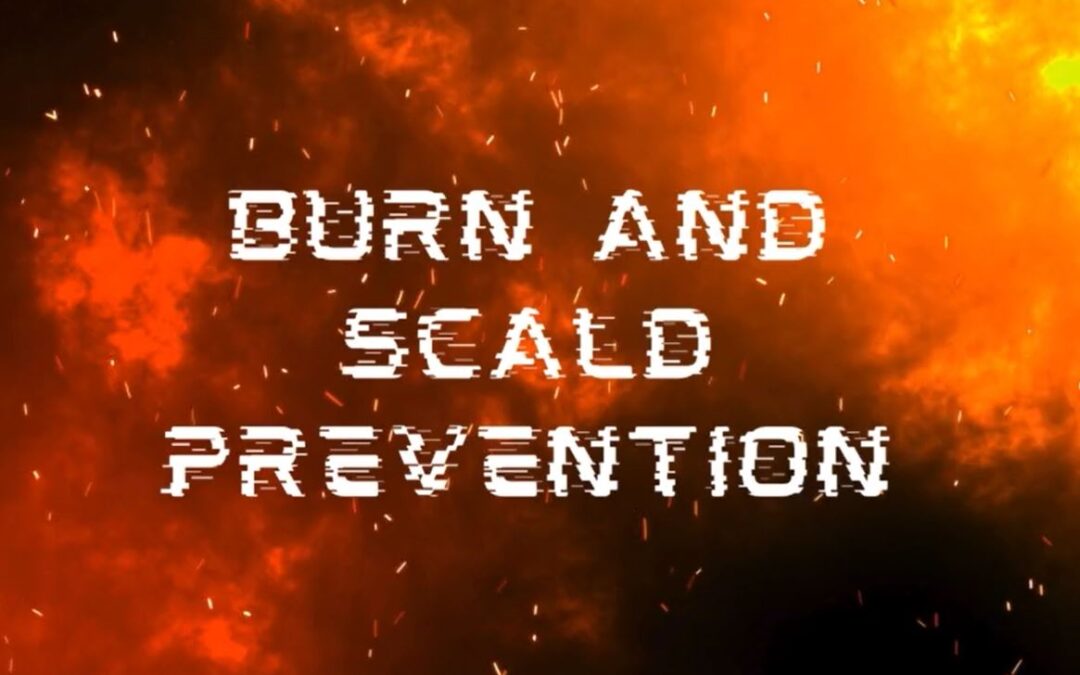
by editor | Aug 12, 2024 | Care Keys - Aides, Care Keys - Nurses
Burns and scalds are serious injuries that can happen to anyone, but they are especially dangerous for people who are sick or elderly. Understanding how these injuries occur and how to prevent them is a key part of your job as a hospice aide.
Burns can be caused by dry heat, such as touching a hot stove, getting too close to a fire, or even handling something like a heated blanket that is too hot. Scalds, on the other hand, are caused by wet heat. This means hot water, steam, or even hot drinks like coffee or tea can cause scalds. Sometimes, burns can also be caused by chemicals that are too strong or not used properly.
As a hospice aide, your goal is to keep your patients safe from these dangers. This means being aware of what can cause burns and scalds and knowing how to prevent them.
Understanding the Risks
As a hospice aide, it’s important to know that some patients are more likely to get burns and scalds than others. Understanding these risks will help you take the right steps to keep them safe.
Some patients, like older adults, have thinner and more fragile skin. This means they can get burned or scalded more easily, even from something that might not seem very hot to you. Patients who are bedridden or have limited movement might not be able to react quickly if something hot touches them. They may not be able to pull away from a hot surface or tell you right away if something is hurting them. Some patients may also have health conditions that make them less able to feel pain or temperature changes. These factors put them at higher risk for burns and scalds.
Here are some specific risks to watch out for:
- Hot Water: Patients are at risk when taking baths or showers, especially if the water is too hot. They may not realize the water is too hot until it’s too late.
- Hot Food and Drinks: Hot food or drinks can cause burns if they are too hot when served. Patients with limited mobility might accidentally spill hot liquids on themselves.
- Heated Surfaces: Patients who use heating pads, hot water bottles, or sit too close to a space heater are at risk. If these items are too hot, they can easily cause burns.
- Electrical Appliances: Appliances like hair dryers, curling irons, or space heaters can get very hot. If not used carefully, they can cause burns.
- Chemicals: Some patients may need special treatments or medications that can cause chemical burns if they touch the skin. Cleaning products can also cause burns if not handled properly.
Understanding these risks is the first step in preventing burns and scalds. By knowing what to look out for, you can help keep your patients safe from harm.
Tips to Prevent Burns and Scalds
Preventing burns and scalds starts with being cautious and following some simple safety tips:
- Check Water Temperature: Before you help a patient take a bath or shower, always check the water temperature. The water should feel warm to the touch but not hot. A good way to test the water is to use a thermometer, making sure it’s between 100°F and 105°F. This is warm enough to be comfortable but not hot enough to cause a burn.
- Handle Hot Items Carefully: When serving hot food or drinks, take a moment to check the temperature. Foods straight out of the oven or microwave can be dangerously hot, so let them cool down a bit first. When in doubt, test the temperature yourself or ask the patient to take a small sip or bite first.
- Avoid Hot Surfaces: Keep your patients away from hot surfaces like stoves, ovens, space heaters, or fireplaces. If you need to use a heating pad or hot water bottle to help ease a patient’s pain, always wrap it in a towel or cloth first. This extra layer can help protect the patient’s skin from burns.
- Be Careful with Electrical Appliances: Appliances like hair dryers, curling irons, or space heaters can get very hot. Make sure these items are in good working order and never leave them turned on and unattended. If you’re using an appliance near a patient, be extra mindful of where it is and how hot it might be.
- Watch Out for Chemicals: Some cleaning products, medications, or treatments can cause burns if they touch the skin. Always read the labels and follow instructions carefully. It’s a good idea to wear gloves when handling these items and to store them out of reach of your patients.
What to Do in Case of a Burn or Scald
Even with the best precautions, accidents can still happen. If your patient does get a burn or scald, it’s important to act quickly to minimize the damage:
- Cool the Area: If a patient gets burned or scalded, the first thing you should do is cool the area. Hold the burned skin under cool (but not cold) running water for 10-20 minutes. This helps stop the burning process and reduces pain. Never use ice on a burn, as it can cause further damage to the skin.
- Cover the Burn: After cooling the burn, gently cover it with a clean, non-stick bandage or a cloth. This helps protect the area from germs and keeps the skin clean.
- Report the Incident: It’s important to let your supervisor know about the burn right away. They will need to assess the injury and decide if further medical care is necessary. You should also write down what happened in the patient’s records so that everyone on the care team is informed.
Conclusion
Being aware of the risks and taking steps to prevent burns and scalds can make a big difference in your patient’s safety. As a hospice aide, you play an important role in keeping your patients safe and comfortable. By following these guidelines and staying alert, you can help prevent accidents and ensure that your patients are well cared for.
Where Can You Find Out More
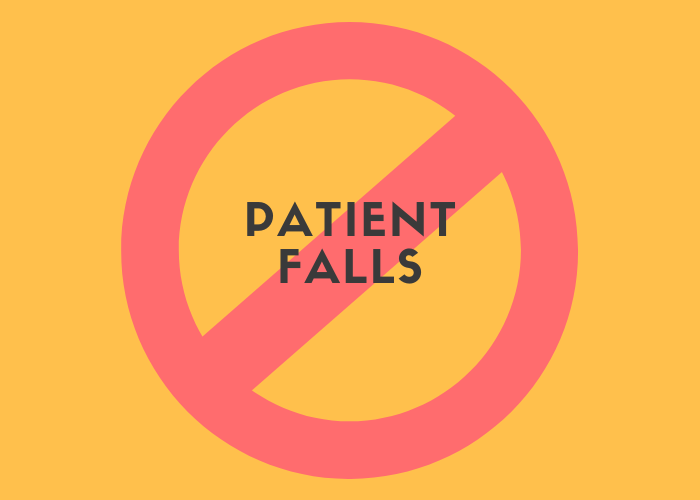
by editor | Aug 11, 2024 | Care Keys - Aides, Care Keys - Nurses
Falls can cause serious injuries, so it’s important to take steps to prevent them. By being careful and following these tips, you can help keep your patients safe from falls.
What May Contribute to Falls
Several things can make a patient more likely to fall. Understanding these factors can help you take steps to reduce the risk. Here are some common reasons why falls may happen:
- Poor Lighting
- Dimly lit rooms or hallways make it hard to see obstacles, increasing the risk of tripping and falling.
- Cluttered or Slippery Floors
- Items on the floor, spills, or slippery surfaces can cause trips and falls.
- Uneven Surfaces
- Uneven floors, loose rugs, or steps can be tripping hazards.
- Weak or Unsteady Legs
- If a patient’s legs are weak or unsteady, they are more likely to lose balance and fall.
- Medications
- Some medications can cause dizziness or drowsiness, making it harder for patients to stay steady on their feet.
- Improper Use of Mobility Aids
- Using walkers, canes, or wheelchairs incorrectly can increase the risk of falls.
- Health Conditions
- Conditions like arthritis, vision problems, or inner ear issues can affect balance and coordination.
- Footwear
- Wearing loose, slippery, or inappropriate footwear can lead to falls.
Factors That Increase the Risk of Falls
Certain factors can make a patient more likely to fall. Knowing these risk factors helps in taking preventive actions:
- Age
- Older adults are more at risk for falls due to age-related changes in strength, balance, and coordination.
- Previous Falls
- A history of falls increases the chance of future falls.
- Muscle Weakness
- Weak muscles, especially in the legs, make it harder to maintain balance.
- Balance Problems
- Issues with balance or coordination increase the risk of falling.
- Vision Impairments
- Poor vision can make it difficult to see obstacles and judge distances, leading to falls.
- Environmental Hazards
- Hazards like uneven floors, poor lighting, or clutter in the home can increase the risk.
- Medications and Side Effects
- Some medications can cause side effects like dizziness or confusion, which can increase fall risk.
- Chronic Health Conditions
- Conditions like diabetes or cardiovascular diseases can affect balance and increase fall risk.
Tips for Fall Prevention
- Keep the Home Safe
- Remove Clutter: Keep floors clear of items that could cause trips.
- Clean Up Spills: Wipe up any spills right away.
- Secure Rugs and Mats: Use non-slip mats or tape down loose rugs.
- Ensure Good Lighting
- Brighten Rooms: Make sure rooms are well-lit.
- Use Nightlights: Place nightlights in key areas.
- Assist with Walking and Moving
- Use a Gait Belt: For extra support when walking.
- Stay Close: Be ready to assist if needed.
- Encourage Slow Movements: Remind the patient to move carefully.
- Lock and Position Equipment
- Lock Bed Wheels: Before moving patients.
- Lock Wheelchair Wheels: Before assisting patients in or out.
- Use Proper Body Mechanics
- Bend Your Knees: Use your legs to lift, not your back.
- Spread Your Feet: For balance when lifting heavy objects.
- Avoid Twisting: Move your feet instead of twisting your back.
- Ensure Safe Footwear
- Wear Non-Slip Shoes: To prevent slipping.
- Avoid Loose Shoes: To prevent tripping.
- Communicate with the Patient
- Explain Movements: Let the patient know what to expect.
- Listen to Concerns: Offer extra support if needed.
- Regularly Check for Hazards
- Inspect the Home: Fix potential hazards like loose handrails or uneven floors.
- Check Equipment: Ensure medical equipment is in good condition.
- Stay Alert and Focused
- Be Aware of Your Surroundings: Pay attention to what’s around you.
- Don’t Rush: Take your time with tasks.
- Report and Document
- Report Hazards: Report issues like loose handrails or wet floors.
- Document Falls: Report and document any falls that occur.
Falls are a common and serious risk for patients, especially those with limited mobility or cognitive impairments. As a home health aide, it’s crucial to create a safe environment by removing hazards, using assistive devices properly, and always being mindful of the patient’s condition. Encourage the patient to wear non-slip footwear, keep pathways clear, and ensure proper lighting. Regularly monitor the patient’s physical and mental health to identify any changes that might increase their fall risk. By taking these precautions, you can significantly reduce the likelihood of falls and help keep your patient safe.
Where Can You Find More Information






